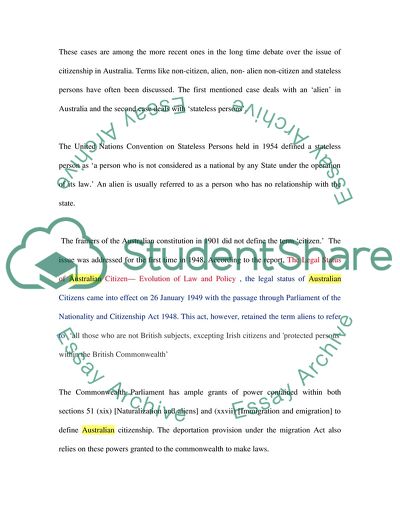Cite this document
(The High Court of Australia Case Study Example | Topics and Well Written Essays - 1500 words, n.d.)
The High Court of Australia Case Study Example | Topics and Well Written Essays - 1500 words. https://studentshare.org/law/1702825-to-what-extent-does-the-interpretation-of-alien-in-the-australian-constitution-accommodate-stateless-persons
The High Court of Australia Case Study Example | Topics and Well Written Essays - 1500 words. https://studentshare.org/law/1702825-to-what-extent-does-the-interpretation-of-alien-in-the-australian-constitution-accommodate-stateless-persons
(The High Court of Australia Case Study Example | Topics and Well Written Essays - 1500 Words)
The High Court of Australia Case Study Example | Topics and Well Written Essays - 1500 Words. https://studentshare.org/law/1702825-to-what-extent-does-the-interpretation-of-alien-in-the-australian-constitution-accommodate-stateless-persons.
The High Court of Australia Case Study Example | Topics and Well Written Essays - 1500 Words. https://studentshare.org/law/1702825-to-what-extent-does-the-interpretation-of-alien-in-the-australian-constitution-accommodate-stateless-persons.
“The High Court of Australia Case Study Example | Topics and Well Written Essays - 1500 Words”. https://studentshare.org/law/1702825-to-what-extent-does-the-interpretation-of-alien-in-the-australian-constitution-accommodate-stateless-persons.


